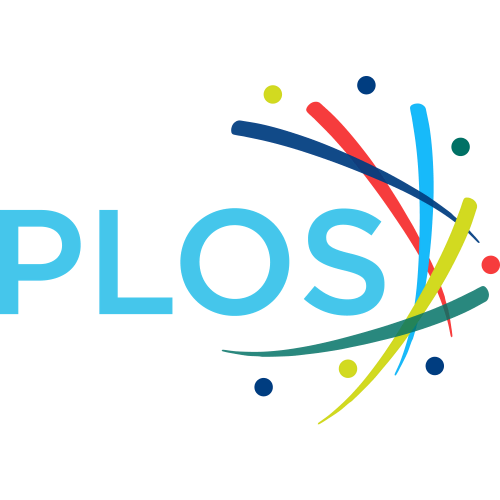The Discovery of Phenylketonuria: The Story of a Young Couple, Two Retarded Children, and a Scientist
In the 1920s, a little girl 3 years of age was brought from China to the United States by her American mother. Although the child was beautiful, her mind was not developing. The grief-stricken mother had consulted doctors in China, but they could neither diagnose the problem nor provide treatment. Morning and night the same questions occupied her mind: “What is the matter with my little girl? What is causing it? Is there any doctor, anywhere, who can cure her?”
In the United States, she also went from doctors to psychologists to clinics looking for someone who could help. Finally, she went to the Mayo Clinic in Rochester, Minnesota. When she had answered all of the doctor's questions, and all the tests were finished, they still could not tell her what was wrong. There was nothing they could do. The disease from which the little girl suffered was unknown at that time.
The mother was Pearl Buck. In her book, The Child Who Never Grew,1 she described her first infant: “I remember when she was only 3 months old she lay in her basket on the sun deck of a ship. I had taken her there for the morning air. The people who promenaded on deck often stopped to look at her, and my pride grew as they spoke of her unusual beauty and of the intelligent look of her deep, blue eyes. I do not know at what moment the growth of her intelligence stopped, nor to this day why it did.”
This is a classical description of the disease, phenylketonuria (PKU). A perfect infant seems to develop normally for several months, then the development slows and at some point seems to stop. “Look at Mommy—look at Daddy!” the parents say as they try to coax the treasured smiles. Instead, the child drifts into a dream world and into irreversible mental retardation.
All Pearl Buck's devotion and determination was of no avail in finding the cause of her child's retardation. It was to be another mother with the same commitment to her beautiful but retarded children, who approximately 10 years later followed the same path until she found a special doctor who unlocked the secret of the fate of these children.
When 1 of the authors (W.R.C.) visited Miss Buck at her Pennsylvania home in 1960, she talked about how her daughter, Carol, then a grown person, had recently been diagnosed as having PKU, as a result of screening tests at the New Jersey Vineland Training School for the Mentally Retarded. During my visit and without disclosing the reason, Pearl Buck was invited to sniff a vial of phenylacetate crystals (the odor of stale urine samples from PKU patients). Immediately she recalled that Carol, as a child, had the same unusual odor. She was relieved that the prophesy of the last words in her book had come true: “What has been, need not forever continue to be so. It is too late for some of our children, but if their plight can make people realize how unnecessary much of the tragedy is, their lives, thwarted as they are, will not have been meaningless.”
These could be the words of Borgny Egeland, the mother of the children through whom the mystery of PKU was brought to light. Or they could express the conviction of the physician and biochemist, Asbjörn Fölling, who believed that “what was not known could be known.” Through the discovery of PKU in these children, hope has been given to thousands of other children and to their grateful parents (Fig 1).
Top-30
Citations by journals
|
1
2
3
|
|
|
International Journal of Neonatal Screening
3 publications, 4.35%
|
|
|
Personalized Medicine
2 publications, 2.9%
|
|
|
International Journal of Molecular Sciences
2 publications, 2.9%
|
|
|
Paediatrics and Child Health (United Kingdom)
2 publications, 2.9%
|
|
|
Journal of Inherited Metabolic Disease
2 publications, 2.9%
|
|
|
Molecular Genetics and Metabolism
1 publication, 1.45%
|
|
|
Biochimica et Biophysica Acta - Molecular Basis of Disease
1 publication, 1.45%
|
|
|
Neurotoxicology and Teratology
1 publication, 1.45%
|
|
|
Nanomedicine
1 publication, 1.45%
|
|
|
Emerging Topics in Life Sciences
1 publication, 1.45%
|
|
|
Journal of Developmental and Behavioral Pediatrics
1 publication, 1.45%
|
|
|
Journal of Medical Screening
1 publication, 1.45%
|
|
|
Journal of Medical Biography
1 publication, 1.45%
|
|
|
Journal of Clinical Monitoring and Computing
1 publication, 1.45%
|
|
|
Journal of Clinical Immunology
1 publication, 1.45%
|
|
|
Journal of Neurology
1 publication, 1.45%
|
|
|
Scientific Reports
1 publication, 1.45%
|
|
|
Neuroethics
1 publication, 1.45%
|
|
|
PLoS ONE
1 publication, 1.45%
|
|
|
Journal of Pediatric Nursing
1 publication, 1.45%
|
|
|
Journal of Pediatric Health Care
1 publication, 1.45%
|
|
|
Seminars in Perinatology
1 publication, 1.45%
|
|
|
Food Chemistry
1 publication, 1.45%
|
|
|
Forensic Science International
1 publication, 1.45%
|
|
|
American Journal of Medical Genetics
1 publication, 1.45%
|
|
|
Nutrition in Clinical Practice
1 publication, 1.45%
|
|
|
Angewandte Chemie - International Edition
1 publication, 1.45%
|
|
|
Angewandte Chemie
1 publication, 1.45%
|
|
|
Small
1 publication, 1.45%
|
|
|
1
2
3
|
Citations by publishers
|
2
4
6
8
10
12
14
16
|
|
|
Elsevier
15 publications, 21.74%
|
|
|
Springer Nature
10 publications, 14.49%
|
|
|
Wiley
10 publications, 14.49%
|
|
|
Multidisciplinary Digital Publishing Institute (MDPI)
5 publications, 7.25%
|
|
|
Oxford University Press
4 publications, 5.8%
|
|
|
Future Medicine
3 publications, 4.35%
|
|
|
SciELO
3 publications, 4.35%
|
|
|
SAGE
2 publications, 2.9%
|
|
|
Medicine Publishing
2 publications, 2.9%
|
|
|
Portland Press
1 publication, 1.45%
|
|
|
Wolters Kluwer Health
1 publication, 1.45%
|
|
|
Public Library of Science (PLoS)
1 publication, 1.45%
|
|
|
Pontificia Universidade Catolica de Campinas
1 publication, 1.45%
|
|
|
Taylor & Francis
1 publication, 1.45%
|
|
|
Cambridge University Press
1 publication, 1.45%
|
|
|
Autonomous Non-profit Organization Editorial Board of the journal Uspekhi Khimii
1 publication, 1.45%
|
|
|
2
4
6
8
10
12
14
16
|
- We do not take into account publications without a DOI.
- Statistics recalculated only for publications connected to researchers, organizations and labs registered on the platform.
- Statistics recalculated weekly.














